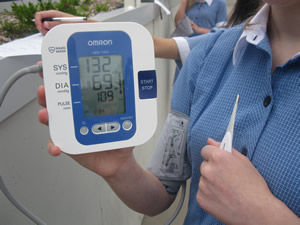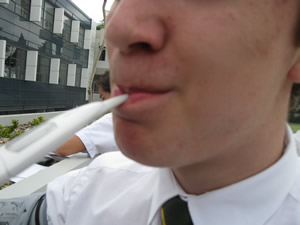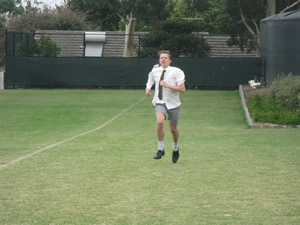Exercise places a physical stress on the body. The heart pumps faster and harder but what happens to the temperature and blood pressure ?
Do a literature search on the topic and briefly state what others have found. Include a bibliography.
Using "if" and "then" statements formulate a hypothesis as to how you expect temperature and blood pressure to respond to increase in heart rate due to physical stress.
Procedure.
Using the apparatus supplied, measure:
- both systolic and diastolic blood pressures at rest,
- temperature under the tongue
- heart rate
- surface skin temperature
.
Do this at least twice or when three concordant results are obtained for each. Average the results.
Conduct a lengthy warm up.
Working in groups of two have your partner run a 100m sprint. This should be done at maximum pace.
When your partner is finished quickly, within 10 seconds, measure blood pressure and heart rate as well as core and surface temperature.
Record the result in the table on the right.
| Activity | Diastolic (mmhg) |
Systolic (mmhg) |
Surface Temp. (oC) |
Core Temp (oC) |
Heart rate |
| Rest | |||||
| 100m | |||||
| 200m | |||||
| 300m | |||||
| 400m |



1) Can we have more than one dependent variable? What is/are the dependent variable/s in this investigation?
3) What do you conclude from your results?
i) Does blood pressure fluctuate? Offer an explanation for your observations.
ii) Does blood pressure increase proportionally to increase in heart rate? Offer an explanation for your observations.
iii) How do both the systolic and diastolic pressures change relative to each other?
iv) How does core temperature change as heat producing exercise takes place?
v) How does the skin temperature change? Explain this result.
vi) What is systolic pressure and diastolic pressure?